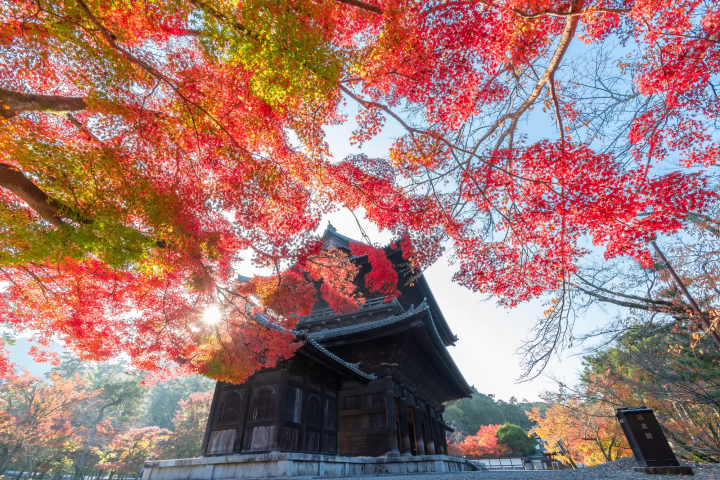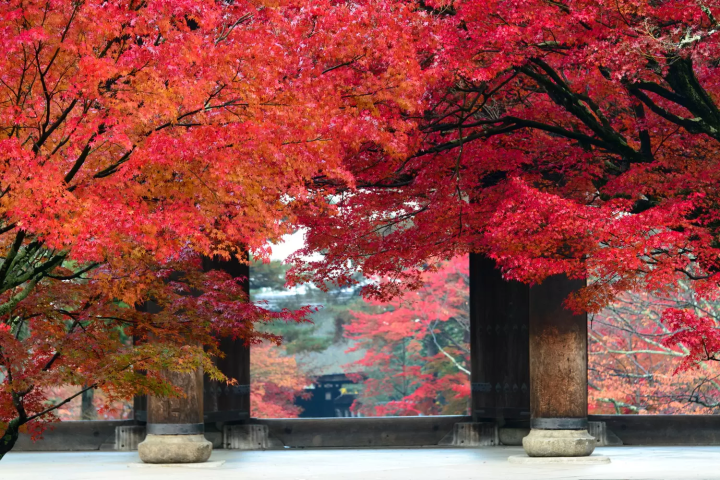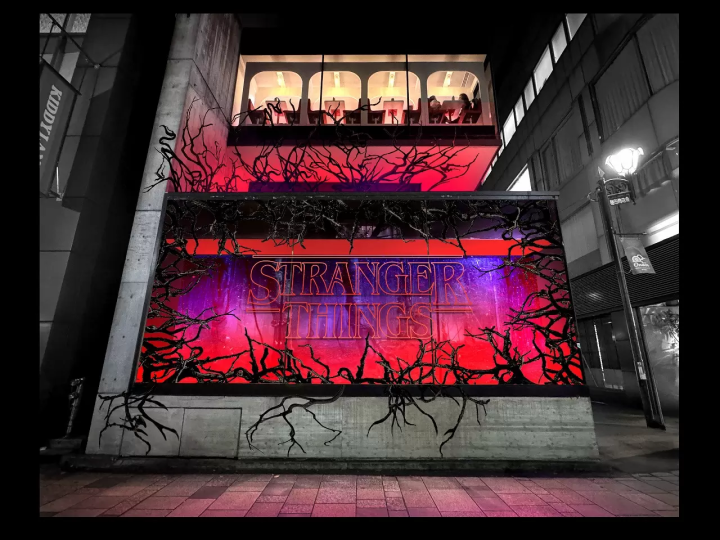Kyoto's Nanzenji Temple: Autumn Foliage Highlights and Access Tips

Nanzenji Temple in Kyoto is a famous spot for autumn leaves, drawing crowds every year to see the stunning foliage and illuminations. In this article, we cover the 2024 highlights, best autumn foliage spots, crowd conditions, and access details.
Nanzenji Temple’s Autumn Leaves

Photo by Pixta
Nanzenji Temple is famous as one of Kyoto’s most beautiful spots for autumn foliage. About 300 maple trees are planted across the expansive temple grounds with vibrant red leaves greeting visitors during the autumn leaf-viewing season.
Nanzenji spans 148,760 square meters and is divided into four main highlights. For that reason, each section offers very distinct sights, even within the same grounds. You can also enjoy the autumn colors while strolling with family and friends.
At Nanzenji Temple, there are areas where an entrance fee is required to view the autumn leaves. Since the hours vary by season, be sure to check the details for the specific day of your visit.
Entrance Fee
Hojo Garden / Sanmon Gate: 600 yen (general), 500 yen (high school students), 400 yen (elementary/junior high school students)
Nanzen'in Temple: 400 yen (general), 350 yen (high school students), 250 yen (elementary/junior high school students)
Hours
December 1 - February 28: 8:40 - 16:30
March 1 - November 30: 8:40 - 17:00
Autumn Foliage Highlights at Nanzenji Temple
1. Best Time to See Autumn Leaves at Nanzenji Temple
2. 4 Top Spots for Autumn Leaves at Nanzenji Temple
3. Nanzenji Temple’s Autumn Light-up: Cancelled in 2024
4. Access: How to Get to Nanzenji Temple
Read also
Best Time to See Autumn Leaves at Nanzenji Temple

Photo by Pixta
Nanzenji Temple’s autumn colors are typically at their peak from mid-November to early December.
The maple leaves begin changing colors in late October, reaching their peak by mid-November and lasting just under a month. The best time to visit is between mid-November and early December, when the trees are at their most vibrant red.
Nanzenji, a Zen Buddhist temple with varying elevations, offers different ways to enjoy the autumn leaves—whether it’s looking up at the colorful trees from below or admiring the foliage alongside the Kyoto cityscape from above.
Additionally, once the autumn-leaf viewing season begins, the temperature around Nanzenji Temple typically reaches a high of around 15°C (59°F), with some days dipping into the single digits.
To fully enjoy autumn-leaf viewing without the chill, be sure to bring windproof outerwear, scarves, and hand warmers.
4 Top Spots for Autumn Leaves at Nanzenji Temple
Nanzenji Temple has four main autumn foliage spots, each offering breathtakingly beautiful views that are sure to make you want to snap a photo.
1. Sanmon Gate

Photo by Pixta
Our first recommended spot is Sanmon Gate, designated as an important cultural property.
Maple trees line both sides of the stone path leading to Sanmon Gate, creating a vibrant red tunnel. Simply walking toward the gate, surrounded by the maple trees, is a truly special experience.
Sanmon Gate is also famous for being one of the tallest gates in Japan. The grandeur of the 22-meter-tall gate against the vibrant colors of the maple trees is truly an unforgettable sight.
If you visit around sunset, you can also enjoy a magical atmosphere as the sun filters through the maple leaves.
2. Suirokaku Aqueduct

Photo by Pixta
Our second recommended spot is Suirokaku Aqueduct, which is often featured in television shows and movies. Built in 1890, the aqueduct was designed to carry water from Lake Biwa to an elevated reservoir.
When autumn arrives, the leaves simultaneously turn shades of red and orange, almost surrounding the brick arches of Suirokaku Aqueduct. Standing 9 meters tall, the aqueduct doesn’t get overshadowed by the vibrant foliage, creating a majestic yet nostalgic atmosphere.
You’re also welcome to take pictures inside the arches of Suirokaku Aqueduct or next to its pillars.
Wearing a kimono and gracefully enjoying the autumn leaves is another delightful way to experience Nanzen-ji Temple.
3. Ohojo Garden

Photo by Pixta
Pass through Sanmon Gate, and you’ll find Hojo Garden inside the head temple, which was also the residence of the former head priest. The Hojo, designated as a National Treasure, consists of two sections: Ohojo, the main hall, and Kohojo, the smaller hall behind it.
Ohojo Garden is where you can see the stunning collaboration between the landscape and the autumn leaves. The garden is characterized by a spacious area of white sand stretching out in the foreground, with Ohojo standing quietly in the background.
During the autumn foliage season, the maple leaves turn a vibrant red, further enhancing the beauty and elegance of the garden.
Additionally, Ohojo Garden is also known as the “Tiger Cubs Crossing Garden” because the stones arranged along the garden resemble tigers and their cubs swimming across the ocean.
Be sure to enjoy the beautiful space where the stones and maple leaves are in perfect harmony.
4. Tenjuan Temple

Photo by Pixta
The last place we’ll introduce is Tenjuan, a sub-temple of Nanzenji Temple. Here, you can enjoy the charming autumn leaves in two distinct gardens.
The first spot is the dry landscape rock garden. This garden features a geometric stone walkway that resembles stepping stones, and it will undoubtedly captivate you, even if you’re not visiting specifically for the autumn leaves.
During the autumn foliage season, the lush maple leaves cascade over the stone walkway and white sand, enhancing the garden’s charm and beauty.
The other garden is a pond-style garden, believed to have been created between the late Kamakura period (1185-1333), when Tenjuan was established, and the Nanboku-cho period (1337-1392). Surrounded by pine trees, maple trees, and a bamboo grove, the garden lets you truly feel the energy of nature.
As the garden style suggests, you can fully enjoy this 3,967-square-meter garden by strolling around the pond.
With a pond at the heart of the garden, you’ll be captivated by the reflection of the autumn leaves on the water and the various creatures that live in the garden.
Nanzenji Temple’s Autumn Light-up

Photo by Pixta
Every year, Nanzenji Temple has held an autumn foliage light-up at night, but the event was unfortunately canceled in 2023.
The 2024 illuminations have also been canceled for the second year in a row.
Nevertheless, you can still enjoy the autumn leaves in various ways at different times of the day at Nanzenji Temple, which is open from early morning to sunset.
There are endless ways to enjoy autumn-leaf viewing, whether by having Nanzen-ji Temple’s autumn colors to yourself in the clear morning air or by visiting between 15:00 and 16:00 to admire the maple leaves and gardens bathed in the sunset light. Be sure to enjoy Nanzen-ji Temple’s many highlights filled with autumn leaves during the warm afternoon hours.
Access: How to Get to Nanzenji Temple
There are two standard ways to access Nanzenji Temple: by public transportation, such as train or bus, or by car.
If you’re visiting by train from Kyoto Station, take the Kyoto City Subway Karasuma Line for three stops, about five minutes, to Karasuma Oike Station. Transfer to the Tozai Line and ride for four stops, about seven minutes, to Keage Station. From there, it’s a 10-minute walk to Nanzenji Temple.
If you are traveling by bus, take the Kyoto City Bus Route 5 from Kyoto Station to Nanzenji Eikando-michi or Route 100 to Higashitennocho.
Either bus takes about 35 minutes and costs 230 yen. It’s about a 10-minute walk to Nanzen-ji Temple from both bus stops.
If you’re driving, head toward Sanjo from the Kyoto-Higashi Interchange for about six kilometers, then turn right at the Keage intersection.
From the Nanzenji intersection, continue down the road for about 250 meters and you’ll find Parking Lot No. 1 just before the central gate. Parking costs 1,000 yen per vehicle for the first two hours, with an additional 500 yen charged for every hour after that.
However, there are only eight parking spots, so it's recommended to use public transportation or a taxi instead of driving.
Explore Kyoto's Temples and Gardens Amidst the Autumn Leaves
Nanzenji Temple is home to many structures, such as the Suirokaku Aqueduct and Tenjuan Temple, which become even more striking as the maple and ginkgo leaves change colors.
Be enthralled by the beauty of the autumn leaves as you learn about the historical context in which the temple and gardens were created.
Read also
Main image by Pixta





































![[Wakayama Sign] Plums and plum wine](https://resources.matcha-jp.com/resize/720x2000/2025/12/08-252248.webp)

![[2025 Update] Introducing free Wi-Fi spots in Tokoname City , Aichi Prefecture](https://resources.matcha-jp.com/resize/720x2000/2025/12/16-253074.webp)

